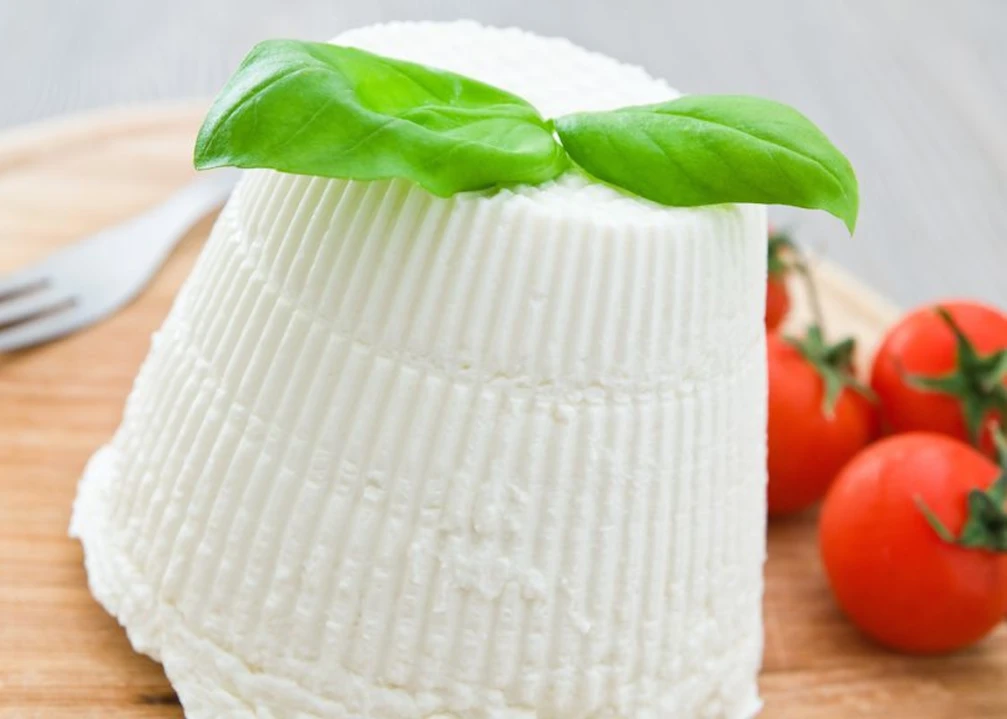The first historical references to the Roman ricotta cheese date from the description of cheese-making techniques provided in “De re rustica” by the Roman agronomist Columella in the 1st century BC. In those times, sheep's milk had three uses: the first religious, the second alimentary, as a food or drink, and the third to make both fresh and aged sheep cheese.
From the whey, ricotta was obtained first and the rest fed to pigs. Mario Vizzardi, in his book “Formaggi Italiani”, says that ricotta originated in the Roman countryside and was popularized by Saint Francis of Assisi, who, finding himself in Lazio town in 1223 for the construction of a crib, taught the shepherds the art of making ricotta.
The Product
Ricotta Romana DOP is a fresh dairy product made exclusively from the whey of whole milk from the most common sheep breeds in Lazio: Sarda, Comisana, Sopravissana, Massese and related cross-breeds. The whey, which has a characteristic pale yellow colour, must have well-defined chemical parameters, in order to ensure the specific qualities of Ricotta Romana DOP.
The resulting Ricotta Romana DOP has a very fine texture, a more marked colour than cow ricotta, a fat content of at least 40% of the dry substance and, especially, a delicate, sweet flavour of fresh milk. Ricotta Romana DOP is packed in truncated conical wicker, plastic or metal baskets with a maximum capacity of 2 kg.
Production
The whey, which is the liquid left after the coagulation of milk, is obtained by straining the liquid from the curds during the making of cheese from sheep's milk.
Sheep farming is the most common in the Lazio region. The farming system and the type of feed affect the quality of the whey. The whey obtained from sheep raised in Lazio is distinguished by its sweet taste: the resulting product, i.e., Ricotta Romana DOP acquires a sweetish flavour that makes it distinct from any other type of cheese.
The whey is heated to 85-90 °C and gently agitated; the slower this process, the softer and more compact the product. During the heating process, whole sheep's milk is added up to a percentage of 15% of the total volume of the whey in order to improve the quality and yield of the ricotta.
The heating, which usually occurs in the same boilers in which Pecorino cheese is produced, favours the precipitation and coagulation of the whey proteins and thus their rise to the surface in the form of small flakes. Their surface consolidation in a layer of white flakes occurs when heating is suspended. Then the ricotta is skimmed with a perforated ladle.
The ricotta cheese is placed in perforated wicker, plastic or metal baskets with a truncated conical shape for 8-24 hours, until the whey is completely drained. The drained product is then left to dry for several hours in cool rooms and then packaged. The resulting ricotta has a very fine texture, a more marked colour than cow ricotta and a delicate, sweetish flavour - which is why it's known as "sweet ricotta”.
The Area
The area of origin of the whey (obtained from whole sheep's milk) and the processing and transformation of Ricotta Romana DOP is the entire territory of the Region Lazio. The conditions for breeding the sheep and making the cheese must be traditional to the area and suitable to given the milk and resulting product its specific characteristics.
The elements that prove the link with the environment are either by natural factors, such as the typical pedological and climatic characteristics of the region, and human factors, such as the wisdom and experience of the master cheese makers working in the area. The natural factors allow the use of natural meadows and pasture-fields, a source of food for the sheep, which gives a special quality to milk destined for cheese making.
This type of nutrition, combined with favourable environmental conditions for breeding characterizes the product and distinguishes Ricotta Romana DOP from all other ricottas.
A crucial element for obtaining a product of exceptional quality is the traditional practice of moving to a “mountain pasture”, which allows the animal to escape the summer heat and possible environmental and nutritional stresses that it could suffer in the plains.
Consorzio di Tutela della Ricotta Romana




